Bohao Wang
MSL: Not All Tokens Are What You Need for Tuning LLM as a Recommender
Apr 05, 2025Abstract:Large language models (LLMs), known for their comprehension capabilities and extensive knowledge, have been increasingly applied to recommendation systems (RS). Given the fundamental gap between the mechanism of LLMs and the requirement of RS, researchers have focused on fine-tuning LLMs with recommendation-specific data to enhance their performance. Language Modeling Loss (LML), originally designed for language generation tasks, is commonly adopted. However, we identify two critical limitations of LML: 1) it exhibits significant divergence from the recommendation objective; 2) it erroneously treats all fictitious item descriptions as negative samples, introducing misleading training signals. To address these limitations, we propose a novel Masked Softmax Loss (MSL) tailored for fine-tuning LLMs on recommendation. MSL improves LML by identifying and masking invalid tokens that could lead to fictitious item descriptions during loss computation. This strategy can effectively avoid the interference from erroneous negative signals and ensure well alignment with the recommendation objective supported by theoretical guarantees. During implementation, we identify a potential challenge related to gradient vanishing of MSL. To overcome this, we further introduce the temperature coefficient and propose an Adaptive Temperature Strategy (ATS) that adaptively adjusts the temperature without requiring extensive hyperparameter tuning. Extensive experiments conducted on four public datasets further validate the effectiveness of MSL, achieving an average improvement of 42.24% in NDCG@10. The code is available at https://github.com/WANGBohaO-jpg/MSL.
Large-Scale AI in Telecom: Charting the Roadmap for Innovation, Scalability, and Enhanced Digital Experiences
Mar 06, 2025Abstract:This white paper discusses the role of large-scale AI in the telecommunications industry, with a specific focus on the potential of generative AI to revolutionize network functions and user experiences, especially in the context of 6G systems. It highlights the development and deployment of Large Telecom Models (LTMs), which are tailored AI models designed to address the complex challenges faced by modern telecom networks. The paper covers a wide range of topics, from the architecture and deployment strategies of LTMs to their applications in network management, resource allocation, and optimization. It also explores the regulatory, ethical, and standardization considerations for LTMs, offering insights into their future integration into telecom infrastructure. The goal is to provide a comprehensive roadmap for the adoption of LTMs to enhance scalability, performance, and user-centric innovation in telecom networks.
Multi-Sources Fusion Learning for Multi-Points NLOS Localization in OFDM System
Sep 04, 2024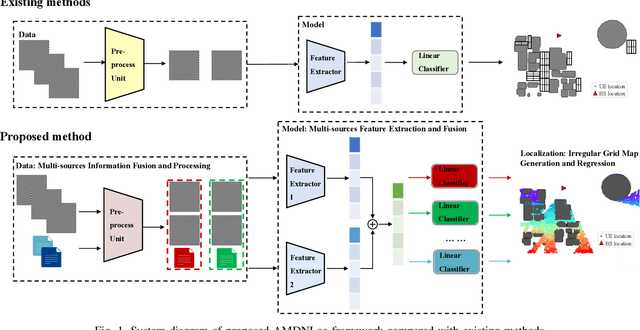
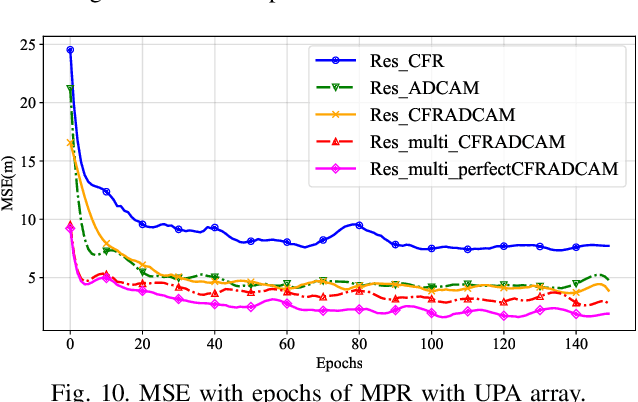
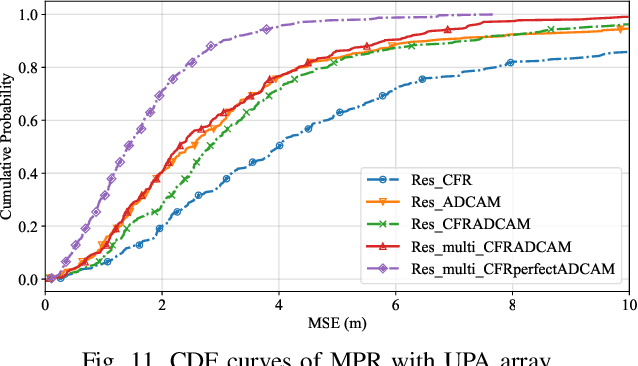
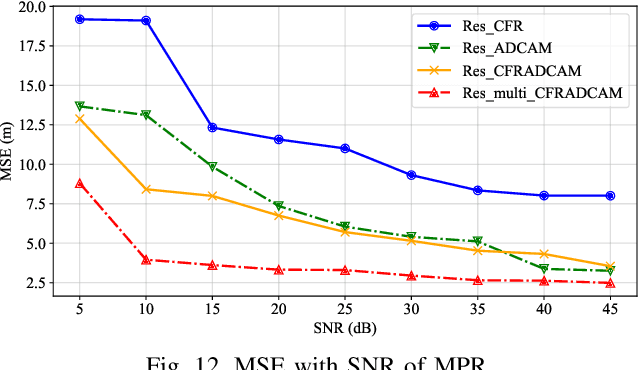
Abstract:Accurate localization of mobile terminals is a pivotal aspect of integrated sensing and communication systems. Traditional fingerprint-based localization methods, which infer coordinates from channel information within pre-set rectangular areas, often face challenges due to the heterogeneous distribution of fingerprints inherent in non-line-of-sight (NLOS) scenarios, particularly within orthogonal frequency division multiplexing systems. To overcome this limitation, we develop a novel multi-sources information fusion learning framework referred to as the Autosync Multi-Domains NLOS Localization (AMDNLoc). Specifically, AMDNLoc employs a two-stage matched filter fused with a target tracking algorithm and iterative centroid-based clustering to automatically and irregularly segment NLOS regions, ensuring uniform distribution within channel state information across frequency, power, and time-delay domains. Additionally, the framework utilizes a segment-specific linear classifier array, coupled with deep residual network-based feature extraction and fusion, to establish the correlation function between fingerprint features and coordinates within these regions. Simulation results reveal that AMDNLoc achieves an impressive NLOS localization accuracy of 1.46 meters on typical wireless artificial intelligence research datasets and demonstrates significant improvements in interpretability, adaptability, and scalability.
LLM4DSR: Leveraing Large Language Model for Denoising Sequential Recommendation
Aug 15, 2024Abstract:Sequential recommendation systems fundamentally rely on users' historical interaction sequences, which are often contaminated by noisy interactions. Identifying these noisy interactions accurately without additional information is particularly difficult due to the lack of explicit supervisory signals to denote noise. Large Language Models (LLMs), equipped with extensive open knowledge and semantic reasoning abilities, present a promising avenue to bridge this information gap. However, employing LLMs for denoising in sequential recommendation introduces notable challenges: 1) Direct application of pretrained LLMs may not be competent for the denoising task, frequently generating nonsensical responses; 2) Even after fine-tuning, the reliability of LLM outputs remains questionable, especially given the complexity of the task and th inherent hallucinatory issue of LLMs. To tackle these challenges, we propose LLM4DSR, a tailored approach for denoising sequential recommendation using LLMs. We constructed a self-supervised fine-tuning task to activate LLMs' capabilities to identify noisy items and suggest replacements. Furthermore, we developed an uncertainty estimation module that ensures only high-confidence responses are utilized for sequence corrections. Remarkably, LLM4DSR is model-agnostic, allowing the corrected sequences to be flexibly applied across various recommendation models. Extensive experiments validate the superiority of LLM4DSR over existing methods across three datasets and three recommendation backbones.
Distillation Matters: Empowering Sequential Recommenders to Match the Performance of Large Language Model
May 01, 2024



Abstract:Owing to their powerful semantic reasoning capabilities, Large Language Models (LLMs) have been effectively utilized as recommenders, achieving impressive performance. However, the high inference latency of LLMs significantly restricts their practical deployment. To address this issue, this work investigates knowledge distillation from cumbersome LLM-based recommendation models to lightweight conventional sequential models. It encounters three challenges: 1) the teacher's knowledge may not always be reliable; 2) the capacity gap between the teacher and student makes it difficult for the student to assimilate the teacher's knowledge; 3) divergence in semantic space poses a challenge to distill the knowledge from embeddings. To tackle these challenges, this work proposes a novel distillation strategy, DLLM2Rec, specifically tailored for knowledge distillation from LLM-based recommendation models to conventional sequential models. DLLM2Rec comprises: 1) Importance-aware ranking distillation, which filters reliable and student-friendly knowledge by weighting instances according to teacher confidence and student-teacher consistency; 2) Collaborative embedding distillation integrates knowledge from teacher embeddings with collaborative signals mined from the data. Extensive experiments demonstrate the effectiveness of the proposed DLLM2Rec, boosting three typical sequential models with an average improvement of 47.97%, even enabling them to surpass LLM-based recommenders in some cases.
SIGformer: Sign-aware Graph Transformer for Recommendation
Apr 18, 2024Abstract:In recommender systems, most graph-based methods focus on positive user feedback, while overlooking the valuable negative feedback. Integrating both positive and negative feedback to form a signed graph can lead to a more comprehensive understanding of user preferences. However, the existing efforts to incorporate both types of feedback are sparse and face two main limitations: 1) They process positive and negative feedback separately, which fails to holistically leverage the collaborative information within the signed graph; 2) They rely on MLPs or GNNs for information extraction from negative feedback, which may not be effective. To overcome these limitations, we introduce SIGformer, a new method that employs the transformer architecture to sign-aware graph-based recommendation. SIGformer incorporates two innovative positional encodings that capture the spectral properties and path patterns of the signed graph, enabling the full exploitation of the entire graph. Our extensive experiments across five real-world datasets demonstrate the superiority of SIGformer over state-of-the-art methods. The code is available at https://github.com/StupidThree/SIGformer.
Distributionally Robust Graph-based Recommendation System
Feb 21, 2024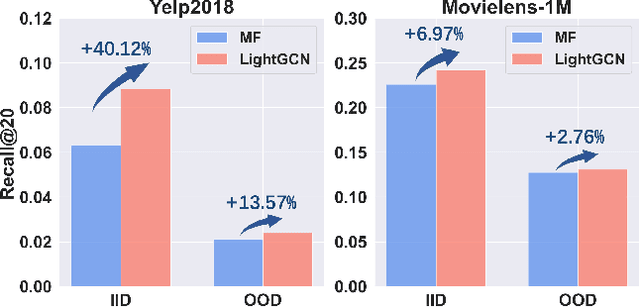

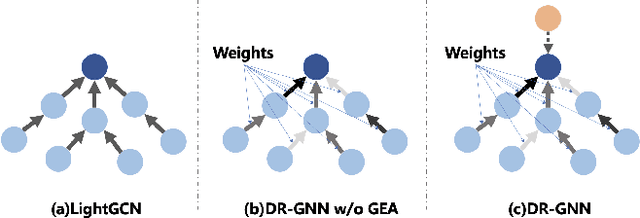
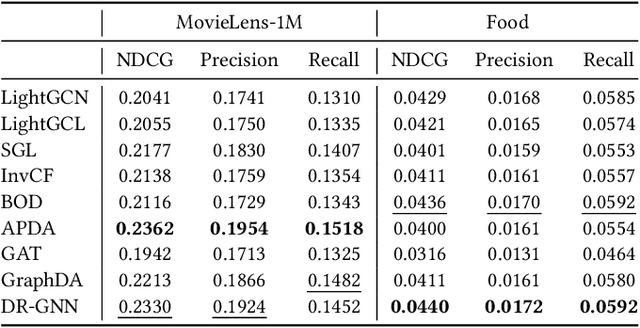
Abstract:With the capacity to capture high-order collaborative signals, Graph Neural Networks (GNNs) have emerged as powerful methods in Recommender Systems (RS). However, their efficacy often hinges on the assumption that training and testing data share the same distribution (a.k.a. IID assumption), and exhibits significant declines under distribution shifts. Distribution shifts commonly arises in RS, often attributed to the dynamic nature of user preferences or ubiquitous biases during data collection in RS. Despite its significance, researches on GNN-based recommendation against distribution shift are still sparse. To bridge this gap, we propose Distributionally Robust GNN (DR-GNN) that incorporates Distributional Robust Optimization (DRO) into the GNN-based recommendation. DR-GNN addresses two core challenges: 1) To enable DRO to cater to graph data intertwined with GNN, we reinterpret GNN as a graph smoothing regularizer, thereby facilitating the nuanced application of DRO; 2) Given the typically sparse nature of recommendation data, which might impede robust optimization, we introduce slight perturbations in the training distribution to expand its support. Notably, while DR-GNN involves complex optimization, it can be implemented easily and efficiently. Our extensive experiments validate the effectiveness of DR-GNN against three typical distribution shifts. The code is available at https://github.com/WANGBohaO-jpg/DR-GNN.
 Add to Chrome
Add to Chrome Add to Firefox
Add to Firefox Add to Edge
Add to Edge